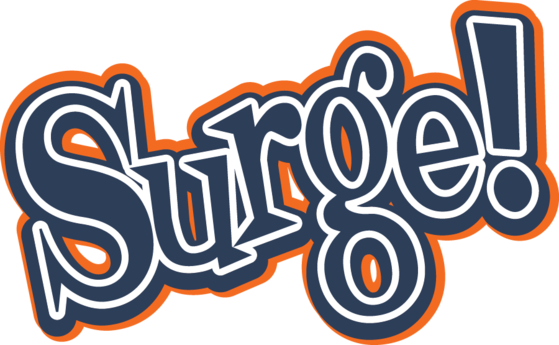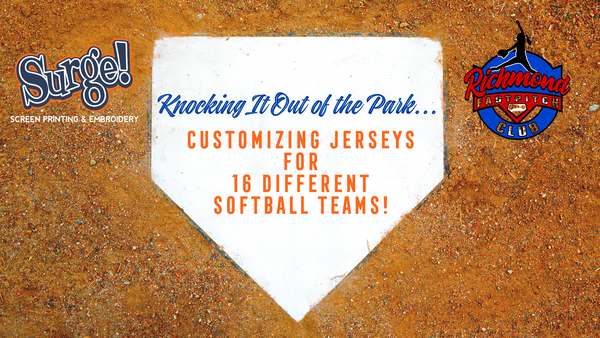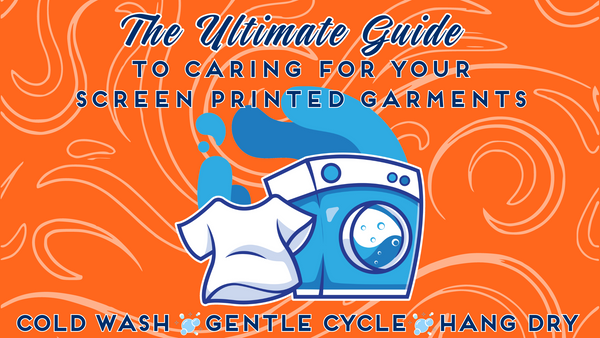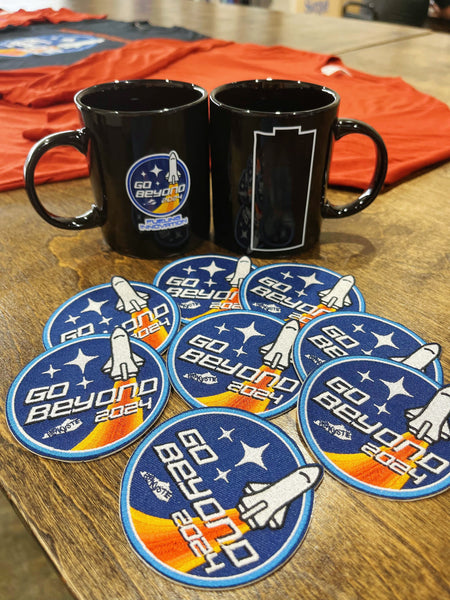So, I was asked by our Marketing Manager to write a blog post about artwork for screen printing; specifically, what our clients need to know about artwork when placing an order. “Sure”, I said. “That will be easy”, I said. After all, I’ve been doing graphic design for screen printing for over 25 years. I’m a wealth of knowledge, right?...Right?...Maybe?
What is Screen Printing?
Let’s start at the very beginning by defining the process of screen printing. Unless you’ve actually worked in the business or, at the very least, placed an order before, you probably have a very limited understanding of what screen printing actually is. Screen Printing in its most basic form involves four basic parts…screens, squeegees, ink and heat. We use a squeegee to press ink through a stencil in a screen. The ink is then sent through a dryer and heated to reach a proper cure temperature which causes the permanent bond to the cotton/polyester.
How does the Artwork Process work? In other words, how does the idea get from one’s head onto a shirt?
Being a visual learner and graphic designer, I decided to make a flowchart of how this multi-step process happens. I will discuss each step more in depth in following questions. Take a look…
Let’s examine each section of this flow chart individually:
1. Start with an idea
Every garment order begins with a thought or idea. These ideas can vary dramatically in scope. Some people may have a generalized concept while others may have a very detailed idea, drawing or maybe even computer generated art of what they want on their garment.
Our job at Surge is to take those ideas, no matter in what stage of development they exist, and convert them into a great design for screen printing. Our sales staff function as a liaison between you, the customer, and the art department. It is important for them to get as much detail as possible about your design.
2. Art Department creates the design digitally
The job of the Art Department can vary greatly with each job. Sometimes we start with just an idea from you, the customer. If this is a case, the more detailed you can be the better the result and the more money you save. Other times we have art in various stages from a logo on a business card to high resolution digital images of your artwork or logo. Often we re-create logos that are provided to us. This simple means we use the provided logo, whatever quality level it might be, and create a digital file we can use to complete the printing process.
Once the design is approved, it goes to the customer for approval. This is usually in the form of an emailed proof sheet that shows your design superimposed onto an image of your garments. It lists all the details of the order. It is extremely important that customers examine this proof very carefully to make sure all information, spelling, ink colors and artwork is correct! Once the design is approved, we proceed to the next step.
3. Color Separations
The term Color Separations simply means we take the digital art file and separate or print out a piece of film for each color in the design. This clear film is then used to burn a stencil into a screen. (More about burning screens later)
If you will notice, in the example shown we only see 3 visible colors in the design but we are separating 4 colors. Because the design is going on a dark shirt (Navy Blue), it requires an under-base or First Down White. This base coat is printed and then dried to help the additional colors show up bright. If the colors were printed directly on the navy shirt they would appear dark or dingy. However, because they are printing on top of a white ink and not directly onto the navy shirt, they appear vibrant.
4. Burn the Separations into a screen to create a stencil
This clear film Separations are then used to burn a stencil into a screen. The term burn is a photography term that means to expose to light. We use a machine called an Exposure Unit for this process. The screens are coated with a light sensitive photo emulsion that allows an image or stencil of open screen to be created. We won’t go into the details of how this process works. After the screens are exposed, they are rinsed with water to finalize the process. They are then allowed to dry before proceeding to the next step.
5. Prepare the screens for printing
Once the exposed screens are dry, we prep them for printing by taping over any open mesh in the screens that would allow ink to come through. We only want the ink to pass through the stencil we burned and not the registrations marks or edges. We prevent this from happening by using a specialized tape that is made to stick to the mesh as well as the aluminum frames.
6. Set up and align the screens on the press
This step is pretty self-explanatory. We set up each screen onto an individual head on the manual or automatic press. We then use the registration marks on the design to align each screen. Once aligned, we add the appropriate ink to each screen and do a test print.
7. Send each shirt through the dryer to reach proper cure temperature
After the test print is approved by your Account Manager, we are ready to rock. We start the printing process and can reach speeds up to 500 shirts per hour on the automatic presses. Each shirt is sent through the dryer where they reach proper cure temperature ensuring a permanent bond to the cotton/polyester materials.
8. The shirt is ready to wear
Once the garment exits the dryer, they are counted and packaged for delivery or pick-up. At this point, the garments are ready to wear!
What does one need to consider before starting the ordering process?
Let’s talk about some things that would be helpful for you to know before starting the order process.
Let’s determine what stage you’re at and see if we can expand on that concept to make the ordering process easier. Here are some common starting points customers come to us with:
Do you have a logo you need to incorporate?
If so, we will look at what format you have your logo in and go from there to use it or get it re-created in a format we can use.
Do you have a favorite t-shirt? What does it look like?
Show us or tell us about your favorite t-shirt or design.
Provide an example for inspiration?
Give us an example of a design you like that you’ve found on the internet or already have. Remember, we usually can’t use exactly what you’ve found on the internet because of trademark infringement but we can use it as inspiration (see next category, B)
Describe what kind of text you like:
“Big and Bold” - Thick letters that stand out and make an Impact
“Cute” - Lots of twists and curves
“Distressed/Vintage”
“Classic”
Favorite font(s)
Reference a decade – Example 70s, 80s
This method can be great for expanding your concept or getting an idea of the style of art you may want but keep in mind that, in most circumstances, you cannot use images found online. There are a couple of reasons for this:
- First, most images on the internet are low resolution, usually 72 dpi (dots per inch). The required resolution of most images we can use would be between 250-300 dpi.
-
Secondly, the art on the internet probably already belongs to someone else and may trademarked. If this is the case, you cannot use any art without written permission from the owner. We all want to avoid any trademark infringement.
C. I've got a great idea... can you guys create what's in my head?
Yes! We just have to get it out of there! Be prepared to discuss in depth your ideas and describe them as accurately as possible to your Project Manager.
We love when someone comes in with a sketch or idea on paper or printed out. Even if it is as simple as a stick figure drawing, this gives us a visual map to start with. We will talk with you about what will work and what may not work. Often we expand on the sketch and make it a great design.
If you have a logo or design that is a very small print out, usually all we can do with that is scan it in and use it as a template to re-create your design. This can vary in complexity depending on your design but, in most cases, it is a fairly easy process. Keep in mind that if you’re doing a project that has a sponsor back or requires multiple logo recreations, each design is its own separate little piece of artwork and takes time. If you’re collecting logos for such a layout always ask the business if they have a vector logo they can give you.
Maybe. Whether we can use a design or not depends on how the design was created in the beginning. Keep in mind that printing on a cotton shirt is very different than printing on paper. There are certain limitations that the artist has to take into consideration when creating the design to make sure the final product can be used for screen printing. We can often manipulate these digital design to work, so it’s usually a good thing to start with art done by a graphic designer. We may have to get permission to edit the artwork.
As long as the artist knows the limitations of printing on garments it should be fine. We are always available to answer any questions they might have about designing for screen printing. In fact, it’s always a good idea to have the artist who is creating your design talk to our art department for advice.
What affects pricing?
There are several aspects of artwork that affect pricing.
1. Number of colors in the design– In most instances screen printing artwork follows the rules of “What You See IS What You Get”. In other words, if your design has Yellow, Royal Blue and Red in it, then it will be a 3-Color Design. On some dark colored shirts there will have to be an additional color we call First Down White under the visible colors to make them show up well on the dark material. (See Step #3-Color Separations in the flowchart steps above for more detail)
Final Thoughts
So, in conclusion, with a little preparation and a better understanding of the screen printing process, you can become a better educated consumer with a good understanding of how the artwork process works. We are here to help so we welcome questions even before you are ready to place your order. We pride ourselves as having a quick turnaround on artwork and hope to blow your socks off with our service!






Devon Price
Author